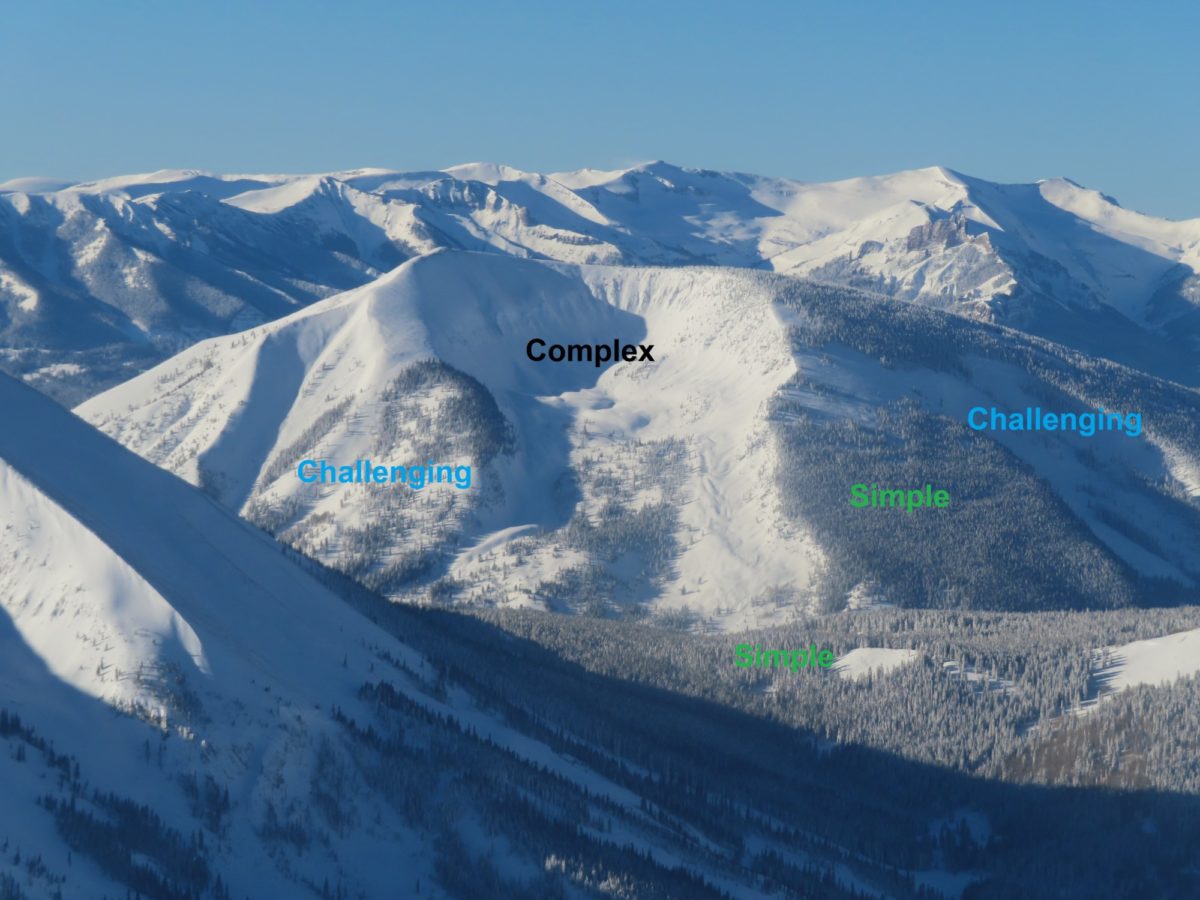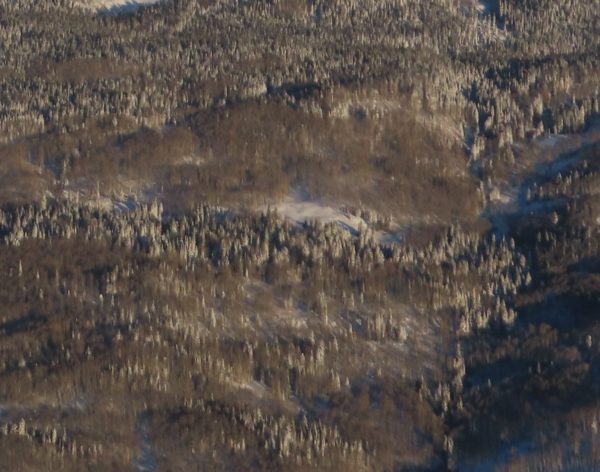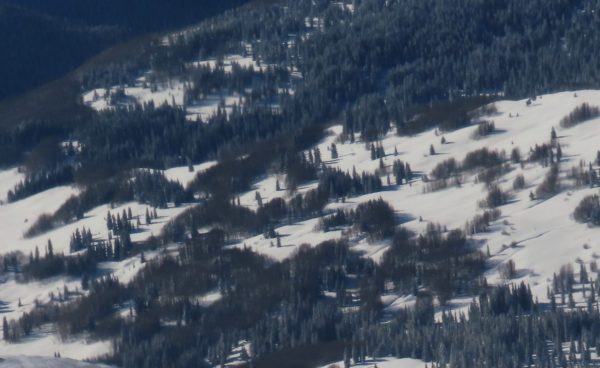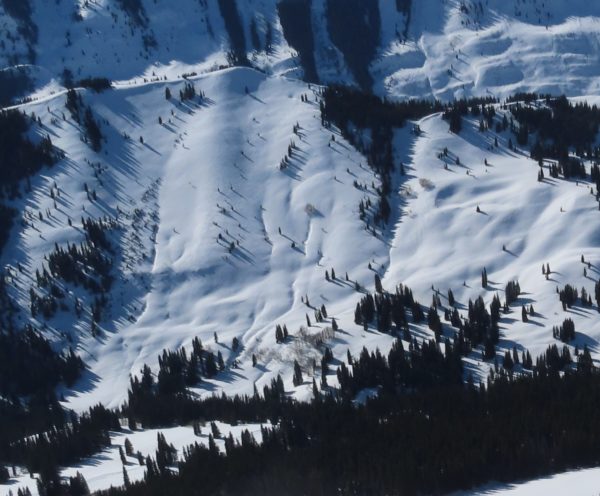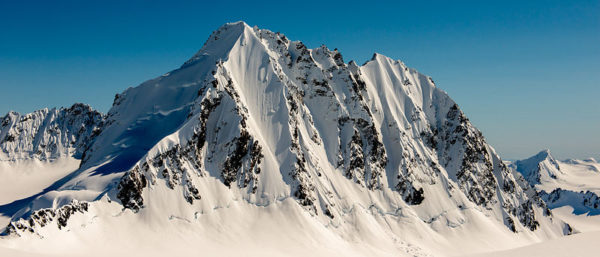A scale used to categorize the severity of avalanche exposure, strictly based on the landscape, regardless of snowpack conditions.
The Avalanche Terrain Exposure Scale (ATES) classifies terrain into five categories based on slope angle, forest density, slope shape, terrain traps, avalanche frequency/magnitude, starting zone size and density, runout zone characteristics, interaction with avalanche paths, and route options for managing exposure.
- Non-avalanche (Class 0): No known exposure to avalanches. Very low angle or densely forested slopes located well away from avalanche paths, or designated trails/routes with no exposure to avalanches.
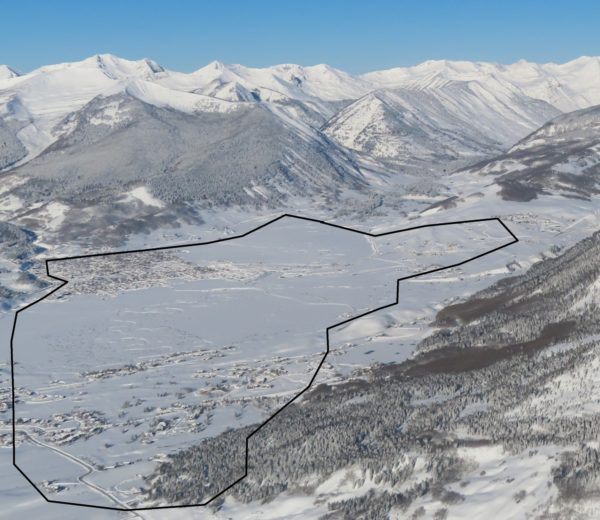
Non-avalanche terrain (shown within the black polygon) is safe from avalanche terrain regardless of conditions. It has no exposure to start zones, runouts, or terrain traps. Credit: Crested Butte Avalanche Center
- Simple (Class 1): Exposure to low angle or primarily forested terrain. Some forest openings may involve the runout zones of infrequent avalanches and terrain traps may exist. Many options to reduce or eliminate exposure.

Simple terrain has low slope angles or dense tree cover, isolated small start zones, minimal exposure to well-defined runouts, and numerous route options. Credit: Crested Butte Avalanche Center
- Challenging (Class 2): Exposure to well-defined avalanche paths, starting zones, terrain traps or overhead hazard. Options exist to reduce or eliminate exposure with careful routefinding.

Challenging terrain generally has moderate slope angles, single slopes above gullies, rocks, or trees, several start zones with potential for large avalanches and rare very large avalanches, intermittent exposure to separate paths and channeled runouts, and a selection of exposure options with opportunities to avoid avalanche terrain. Credit: Crested Butte Avalanche Center
- Complex (Class 3): Exposure to multiple overlapping avalanche paths or large expanses of steep, open terrain. Sustained exposure to overhead hazard. Many avalanche starting zones and terrain traps with minimal options to reduce exposure.
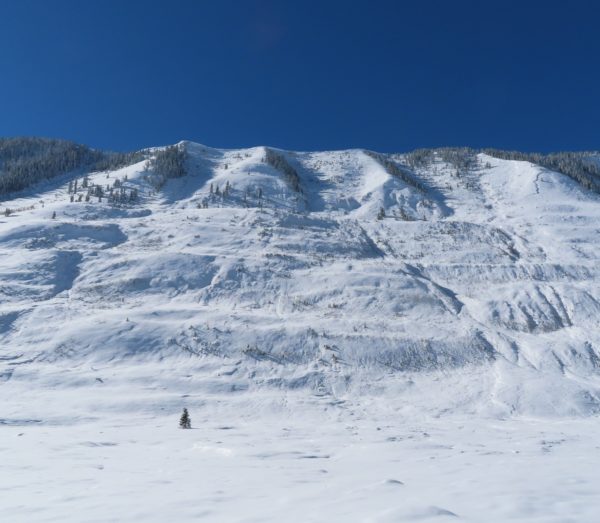
Complex terrain has moderate to high angle open and convoluted slopes, frequent exposure to multiple start zones capable of all avalanche sizes and multiple converging runouts with numerous gullies and terrain traps, and limited options to reduce exposure. Credit: Crested Butte Avalanche Center
- Extreme (Class 4): Exposure to very steep faces with cliffs, spines, couloirs, crevasses or sustained overhead hazard. No options to reduce exposure and even small
avalanches can be fatal.
